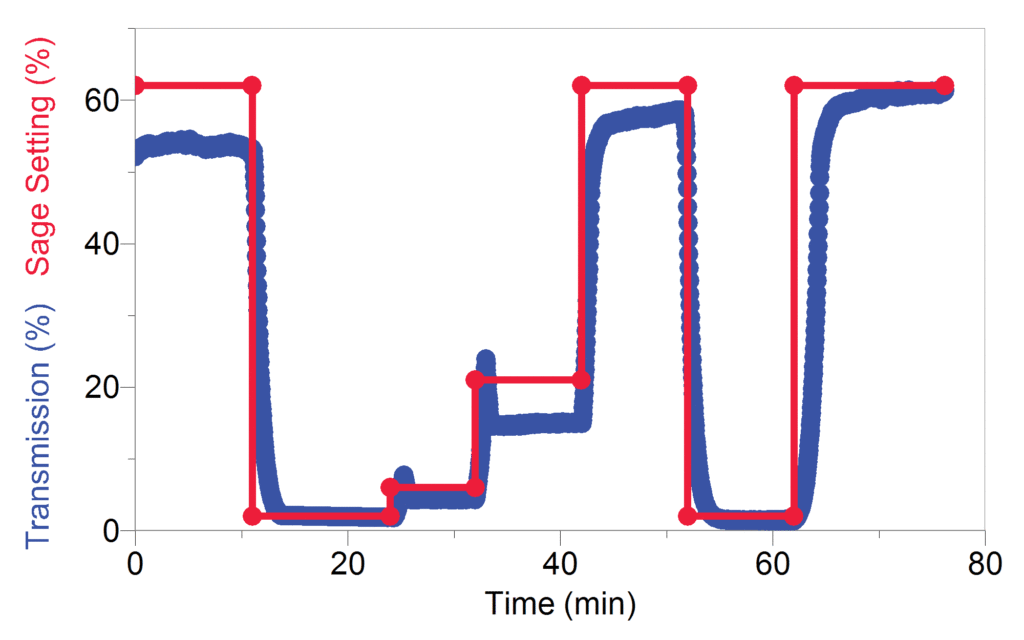The new addition to the Vernier building includes electrochromic windows called SageGlass® that can change optical density. Being a sensor company, we, of course, had to measure just how much light the windows absorb on each setting.
Since daylight varies moment by moment, we couldn’t just measure the light passing through the window with a single sensor; we had to also measure the light striking the window. As a result, we used two Vernier Light Sensors, one behind the glass and one in front of the glass, both pointing toward the sky. We then used the calculated column feature of Logger Pro to calculate the ratio of the two values to determine the transmission of the glass. By switching through the four settings for the glass (2%, 6%, 21%, and 62%), we measured the actual transmission for each phase.

Inspecting the graph, you can see that it takes some time for the glass to respond to a new setting, but the transmission really does change dramatically.
If you visit our classroom, you’ll see how we can dim the room for projection at the touch of a button. It’s pretty cool!
